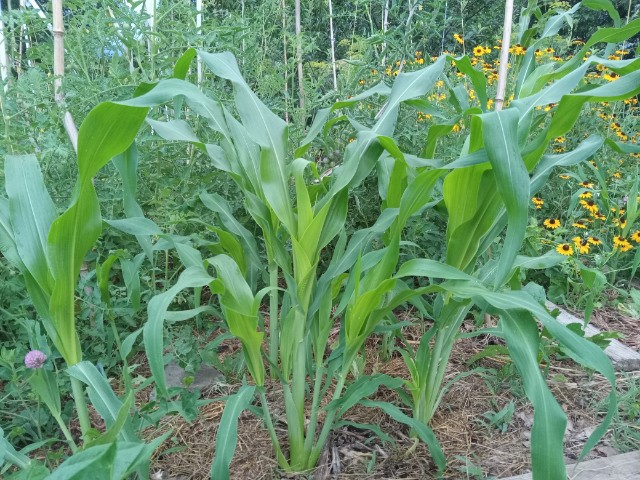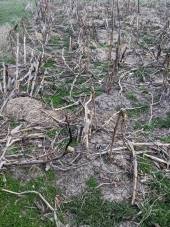
 15
15




 4
4




Creating sustainable life, beauty & food (with lots of kids and fun)

 8
8




 12
12




Jim Fry wrote:I would rotate where you plant the corn. It's quite hard on the soil. The beans help a lot. But rotation is better.
 13
13




Creating sustainable life, beauty & food (with lots of kids and fun)
 10
10




 5
5




 12
12




 9
9




 4
4




William Bronson wrote: This year I added two community garden plot to the the other gardens I'm "tending".
It's an opportunity to boost this new garden and socialize, especially with my sister, with whom I'm sharing the plots.
Because it is remote and we are busy people, we were aiming for a 3 sister's garden.
We think of the three as long season plants left to produce storage crops.
Unfortunately I winter sowed squash and and it's now ready to go in.
I also started some runner beans in an indoor setup provided by the community garden program 😀.
They are also ready to be planted.
If I had started corn at the same time, maybe it would have been fine, but as is I don't see how the three can thrive together.
 6
6




 15
15




 13
13




 3
3




William Bronson wrote:Welp, I went ahead and planted them two feet on center,leaving room between them for corn and squash.
I figure anything worth doing is worth doing wrong enough times to get it right.
 4
4




 6
6




 5
5




 3
3




 11
11




 8
8




 8
8




 5
5




 7
7




 7
7




 5
5




 4
4




 5
5




 8
8




 7
7




 7
7




 5
5





Zone 6, 45 inches precipitation, hard clay soil




 6
6




 7
7




All you corn growers out there. I'd love to see pics of your corn, and some details about your methods.
"We're all just walking each other home." -Ram Dass
"Be a lamp, or a lifeboat, or a ladder."-Rumi
"It's all one song!" -Neil Young
 4
4




May Lotito wrote:I am not sure if you mentioned this before, but how many corn plants are there per hill? Do they also tiller a lot?
I only planted sweet corns a few times before. This year I sowed about two dozen seeds. Some tillers so strongly as to look like a traveler's palm. I would've give each plant more space if I knew it.
 1
1




William Bronson wrote: Our beans and squash are struggling, but the corn seems to be doing quite well.
 1
1




Judith Browning wrote:
All you corn growers out there. I'd love to see pics of your corn, and some details about your methods.
We tried and had high hopes but the rain stopped and we had already decided it was an experiment with no watering and no bug intervention...so except for the southern peas it's pretty sad looking today.
The corn is hickory king and the squash was from 'going to seed'.
The area had a winter cover crop of austrian peas and wheat. I scythed it and then we broadforked.
Added rabbit poop and green grass clippings to the hills and wood chips in between.
It was raining a lot until june 8 then it stopped...not a drop since.
 2
2




Thom Bri wrote:
William Bronson wrote: Our beans and squash are struggling, but the corn seems to be doing quite well.
Looks nice, if a bit dry, leaves curling. Add water, especially when pollinating.
 4
4




Zone 6, 45 inches precipitation, hard clay soil




 5
5




William Bronson wrote:
Thom Bri wrote:
William Bronson wrote: Our beans and squash are struggling, but the corn seems to be doing quite well.
Looks nice, if a bit dry, leaves curling. Add water, especially when pollinating.
We didn't have any water on that site until recently and its been hella hot.
I cant be there more than once week anyway.
It needs mulch.
My yarden beds are heavily leaf mulched and have stayed moist throughout the dry time.
 3
3




May Lotito wrote:Here is another experimental cluster of 16 plants a few weeks younger. Density is 1 plant per sq ft. I also sow bush beans in between at v3 stage.

|
Have you no shame? Have you no decency? Have you no tiny ad?
Regionally adapted Midwest Seeds for the rest of US
http://flyoverseeds.com
|









